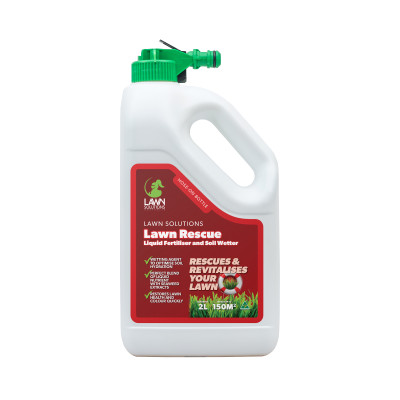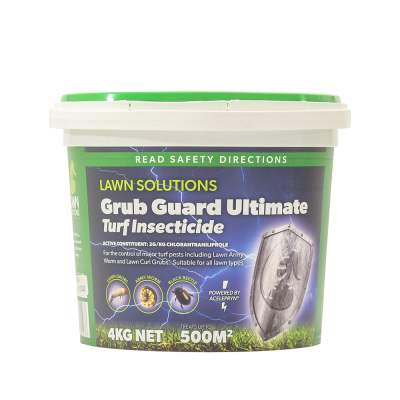Soil Renovation
Resting in a comfortable bed restores you and gives you energy; the same goes for your lawn. If your lawn lies on the right bed of soil it performs to its potential. What makes the perfect bed of soil for your lawn and what can you do to improve your soil? Read on.
The soil that tops the lot
The three main soil types are sandy, loam and clay. For most lawn types, you can’t beat a loam soil.
Even if you have a good soil, a thin layer of loamy soil helps to get everything spot on. If your soil is poor and/or you need to build your levels, then this is the soil mix to order. It contains:
- Sand (medium to course particles), with some clay, which helps to compact and form a base.
- Some heavier soil. This helps to hold moisture and mixed with the sand creates a
free-flowing profile for water movement.
- A composted material, such as green waste, chicken manure and some natural nutrients to help keep your pH at the right level.
This mix is ideal for the development and establishment of healthy turf roots. This will protect the turf from adverse conditions such as drought and winter frost. In most cases a good soil at a depth of 150mm will successfully support a lawn.
If your soil base is not like that detailed above, improvements can be made with soil amendments. The best time to use them is before your turf goes in, but if you have an existing lawn you can still apply them for great benefits.
For a new lawn
The good and bad about sandy soils
Water drains quickly from sandy soils, which is good for drainage, however as the water drains it removes essential nutrients. Sandy soils also dry quickly and can become hydrophobic (water repellent).
Adding organic matter and a soil with some clay will improve the nutrient levels and help with the water holding capacity. Mixing the organics and new soil into the existing soil is essential. In small areas this can be achieved with a mattock or hoe. For large areas a rotary hoe is best. Another option is a mini skid steer loader like a Dingo or Kanga Loader with a rotary hoe attachment.
Why water content is key to success with clay soils
Clay soils hold water and nutrients well but don’t drain as well as sandy soils. Adding organic matter and gypsum and then turning the mix through the soil works wonders. This opens the soil’s structure, improves drainage and oxygen levels, and makes nutrients more available.
A clayey soil needs the right moisture content. If it’s too dry it will be hard and difficult to cultivate. If it’s too wet, it becomes boggy.
How much organic matter and gypsum you add depends on the soil. For light clay about 1kg/sqm of gypsum is the usual application rate. Add two kg/sqm for heavier clays. A layer of about 20 to 30mm of organics should be plenty before cultivating the soil. In some cases, with a light clay soil for example, all you may need to do is spread the gypsum and then cultivate before bringing in and spreading your turf underlay soil mix.
You may just need to turn it over!
Often all that is needed is to turn over a good soil that has become compacted, perhaps with some gypsum, and then level with a thin layer of underlay.
Cheap test could save you big bucks later
Your soil’s pH is another important factor, but one that is often overlooked. It can greatly affect nutrient intake and therefore your lawn’s health and appearance. So testing your soil’s pH and making any adjustments plays an important role. It’s best done before you lay your new lawn. If your soil is acidic, you can fix it with the addition of some lime. If it’s alkaline, or basic, you need to add a sulphur product, such as sulphur of ammonia.
Tip: Don’t forget to check with your council about water exemptions. Many councils are offering water exemptions to people who are installing new lawns.
For existing lawns
For an established lawn on a sandy soil, you need to aerate first, then use a top spreader to spread the organic matter, like top-dressing. Then, apply water to water the organic material in. Remember also to only apply the amendments during your lawn’s growing season.
You may also want to try a wetting agent on an established lawn to improve water retention.
For an established lawn on a clay soil, you need to aerate first, then use a top spreader to spread the gypsum like top-dressing. Then, apply water to water the gypsum in. Remember also for established lawns to only apply the amendment during your lawn’s growing season.
An established lawn’s pH can still be rectified. If your soil is acidic, you can fix it with the addition of some lime. If it’s alkaline, or basic, you need to add a sulphur product, such as sulphur of ammonia. You will need to aerate first, then use a top spreader to spread the lime or sulphur of ammonia like top-dressing. Then, apply water to water the amendment in. Remember also for an established lawn to only apply the amendments during your lawn’s growing season.
Now you know why giving your lawn’s roots a great place to rest is essential for good lawn health. You’re armed with the knowledge to fix a hydrophobic soil, correct pH imbalances and get the best from the three main soil types. For more tips on how to get and keep a great lawn, go here.


